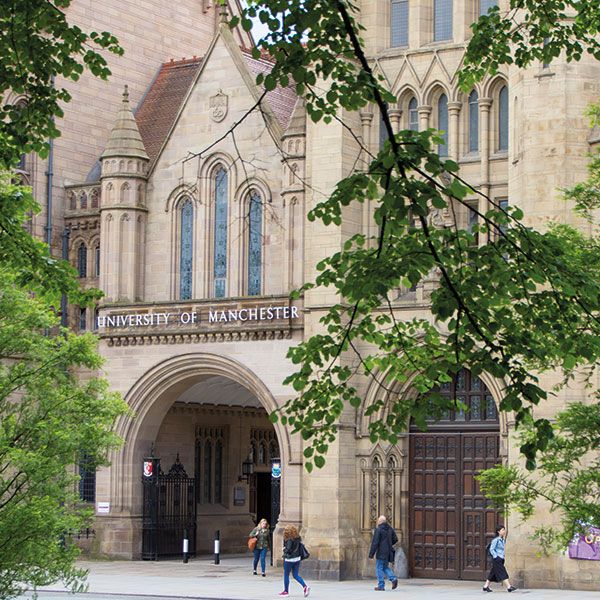Tick-tock, the Sun’s like a clock — but much more complex to predict. Scientists use a combination of observations, models, and mathematical techniques (including a “solar clock” analysis) to understand how the Sun will behave in the upcoming solar cycle. https://go.nasa.gov/3kzpLoF
Get the latest international news and world events from around the world.

The Federation of Northern Ontario Municipalities supports access to SpaceX Starlink internet in Canada
This week on September 16, the Federation of Northern Ontario Municipalities (FONOM) Board of Directors held a meeting to discuss their support for bringing SpaceX’s Starlink broadband internet service to Canada. “The Board adopted a resolution during a recent meeting in Hearst, held both electronically and in-person, supporting Starlink, a satellite internet service that’s being developed by Space Exploration Technologies Corporation’s (SpaceX),” FONOM representatives wrote in a press release. “The Resolution also calls on the Canadian Radio-television and Telecommunications Commission (CRTC) to permit and expand the company a Basic International Telecommunications Services (BITS) license.”
“We know today our citizens require greater connectivity than 50/10 megabits per second,” the President of FONOM Danny Whalen said in a statement. “FONOM believes that the Starlink program is our best option.”
SpaceX says its service is capable of providing low-latency broadband internet below 30 milliseconds, and download speeds greater than 100 megabits per second.



MITCHIE BRUSCO: First-ever Big Air 1260 | World of X Games
Circa 2019
Watch Mitchie Brusco land the first 1260 in skateboard history in the Skateboard Big Air final, Saturday at X Games Minneapolis 2019.
SUBSCRIBE ► http://xgam.es/YouTube
–
Progression at its finest! X Games is your premier destination for all things action sports, music, lifestyle and everything in between.
X Games has been the worldwide leader in action sports since 1995.

Smarter transport systems with graphene
Imagine a road that always stays ice-free, interacts with vehicles to make their own electricity and has road markings that change according to live traffic. It sounds futuristic but a new partnership between The University of Manchester and Highways England is setting the wheels in motion to make this dream a reality.
Highways England is responsible for the motorways and major A roads in the country, carrying four million journeys a day. All this traffic can take its toll. Adding graphene into road maintenance has the potential to extend a road’s life, increase network performance to an industry-changing level and improve the road-user experience.
Manchester’s Graphene Engineering Innovation Centre (GEIC) is plotting a route to a solution, collaborating with Highways England and Pavement Testing Services to tackle low-carbon and digital road networks, and deterioration of road surfaces in the UK, with the help of graphene.

Former NASA Astronaut will be Commander of Axiom’s civilian flight aboard SpaceX’s Crew Dragon
Featured image source: NASA / spacex
Axiom Space Inc. is a Houston, Texas start-up, founded by Michael Suffredini who served as NASA’s International Space Station (ISS) Program Manager from 2005 to 2015. He was responsible for overseeing ISS transition from assembly to the initiation of commercial operations. Axiom is mostly staffed by NASA ex-employees, including former NASA Administrator Charles Bolden. – “The leadership team also includes world-class, specialized expertise in commercial utilization of microgravity, on-orbit operations, astronaut training, space financing, engineering, space system architecture/design/development, space medicine, marketing, and law,” the company states. Together, they are all working towards the commercialization of space.
Axiom aims to build a space station in low Earth orbit to continue operations once NASA retires the ISS program and moves beyond the orbiting laboratory to focus operations on the lunar surface. The company also offers spaceflights for regular civilians to experience microgravity and amazing views of Earth from ISS. “While making access to Low Earth Orbit global during the remainder of ISS’ lifetime, Axiom is constructing the future platform that will serve as humanity’s permanently growing home, scientific and industrial complex in Low Earth Orbit (LEO) – the cornerstone of human activity in space,” company states on its website.
Aubrey de Grey’s Prediction for 2020
Aubrey de Grey, Chairman and Chief Science Officer of the Methuselah Foundation, presents a realistic scenario for 2020 in which everyone knows we will defeat the aging process.
